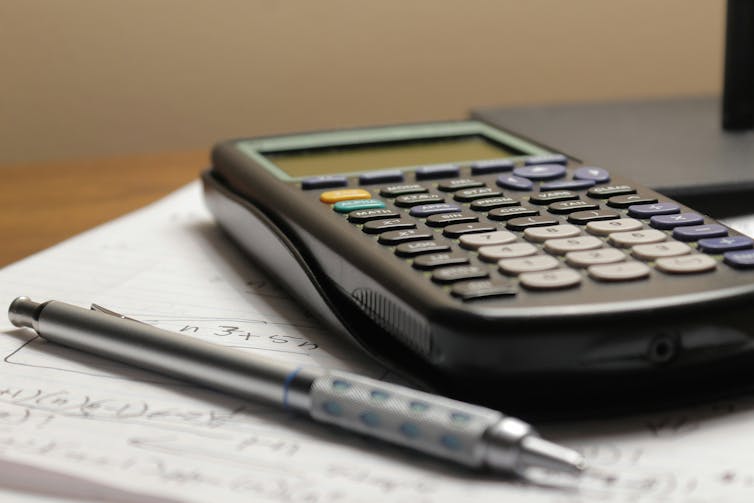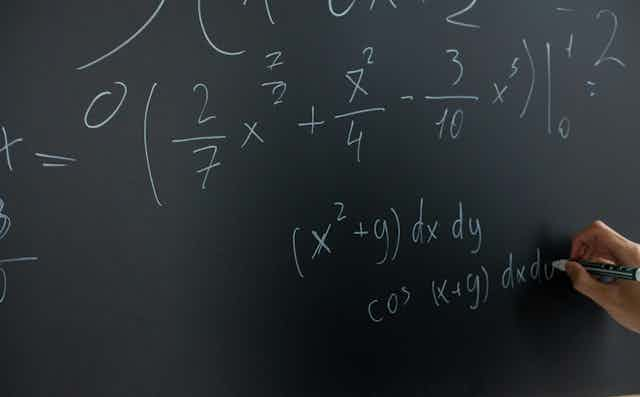Imagine if you enrolled your child in swimming lessons but instead of a qualified swimming instructor, they were taught freestyle technique by a soccer coach.
Something similar is happening in classrooms around Australia every day. As part of the ongoing teacher shortage, there are significant numbers of teachers teaching “out-of-field”. This means they are teaching subjects they are not qualified to teach.
One of the subjects where out-of-field teaching is particularly common is maths.
A 2021 report on Australia’s teaching workforce found that 40% of those teaching high school mathematics are out-of-field (English and science were 28% and 29%, respectively).
Another 2021 study of students in Year 8 found they were more likely to be taught by teachers who had specialist training in both maths and maths education if they went to a school in an affluent area rather than a disadvantaged one (54% compared with 31%).
Our new report looks at how we can fix this situation by training more existing teachers in maths education.
Why is this a problem?
Mathematics is one of the key parts of school education. But we are seeing worrying signs students are not receiving the maths education they need.
The 2021 study of Year 8 students showed those taught by teachers with a university degree majoring in maths had markedly higher results, compared with those taught by out-of-field teachers.
We also know maths skills are desperately needed in the broader workforce. The burgeoning worlds of big data and artificial intelligence rely on mathematical and statistical thinking, formulae and algorithms. Maths has also been identified as a national skill shortages priority area.

What do we do about this?
There have been repeated efforts to address teacher shortages, including trying to retain existing mathematics teachers, having specialist teachers teaching across multiple schools and higher salaries. There is also a push to train more teachers from scratch, which of course will take many years to implement.
There is one strategy, however, that has not yet been given much attention by policy makers: upgrading current teachers’ maths and statistics knowledge and their skills in how to teach these subjects.
They already have training and expertise in how to teach and a commitment to the profession. Specific training in maths will mean they can move from being out-of-field to “in-field”.
How to give teachers this training
A new report commissioned by mathematics and statistics organisations in Australia (including the Australian Mathematical Sciences Institute) looks at what is currently available in Australia to train teachers in maths.
It identified 12 different courses to give existing teachers maths teaching skills. They varied in terms of location, duration (from six months to 18 months full-time) and aims.
For example, some were only targeted at teachers who want to teach maths in the junior and middle years of high school. Some taught university-level maths and others taught school-level maths. Some had government funding support; others could cost students more than A$37,000.
Overall, we found the current system is confusing for teachers to navigate. There are complex differences between states about what qualifies a teacher to be “in-field” for a subject area.
In the current incentive environment, we found these courses cater to a very small number of teachers. For example, in 2024 in New South Wales this year there are only about 50 government-sponsored places available.
This is not adequate. Pre-COVID, it was estimated we were losing more than 1,000 equivalent full-time maths teachers per year to attrition and retirement and new graduates were at best in the low hundreds.
But we don’t know exactly how many extra teachers need to be trained in maths. One of the key recommendations of the report is for accurate national data of every teacher’s content specialisations.
Read more: 'Why would they change maths?' How your child's maths education might be very different from yours
We need a national approach
The report also recommends a national strategy to train more existing teachers to be maths teachers. This would replace the current piecemeal approach.
It would involve a standard training regime across Australia with government and school-system incentives for people to take up extra training in maths.
There is international evidence to show a major upskilling program like this could work.
In Ireland, where the same problem was identified, the government funds a scheme run by a group of universities. Since 2012, teachers have been able to get a formal qualification (a professional diploma). Between 2009 and 2018 the percentage of out-of-field maths teaching in Ireland dropped from 48% to 25%.
To develop a similar scheme here in Australia, we would need coordination between federal and state governments and universities. Based on the Irish experience, it would also require several million dollars in funding.
But with students receiving crucial maths lessons every day by teachers who are not trained to teach maths, the need is urgent.
The report mentioned in this article was commissioned by the Australian Mathematical Sciences Institute, the Australian Mathematical Society, the Statistical Society of Australia, the Mathematics Education Research Group of Australasia and the Actuaries Institute.

